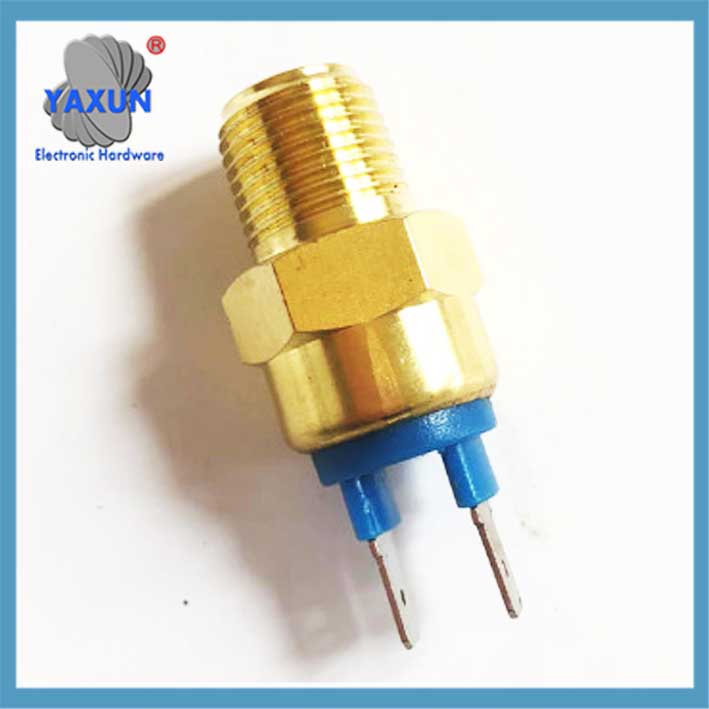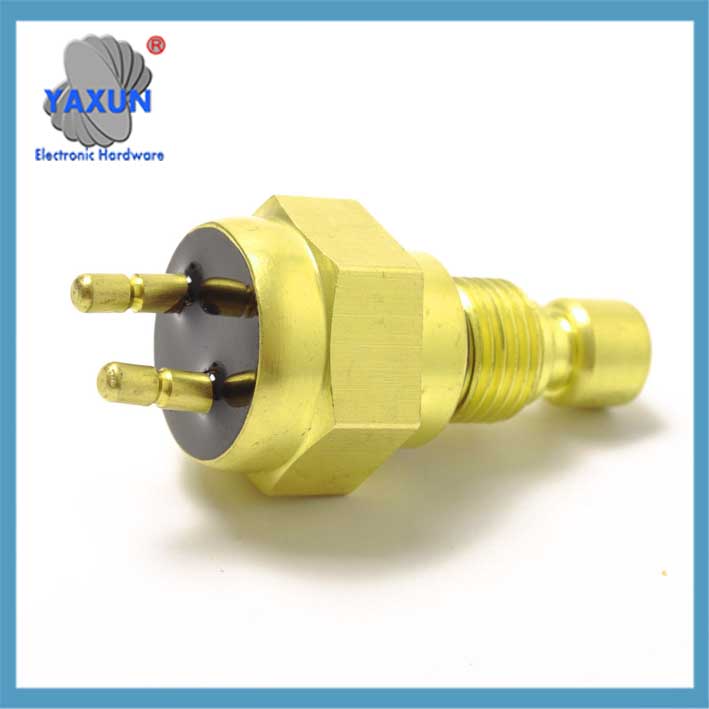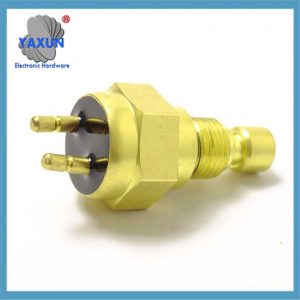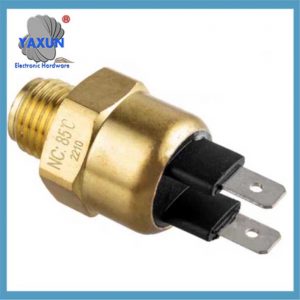Danh mục sản phẩm
- cầu chì nhiệt 32
- cầu chì gắn trên bề mặt 12
- nhiệt điện trở 36
- Giá đỡ cầu chì gắn PCB 27
- Dây nịt dây điện 6
- Giá đỡ cầu chì lưỡi 17
- máy điều nhiệt 50
- Cầu chì điện 24
- Cảm biến nhiệt độ ô tô 7
- Bộ ngắt mạch nhiệt 22
- Hộp đựng cầu chì 36
- Cảm biến nhiệt độ 75
- Công tắc nhiệt 68
- Cầu chì ô tô 20
- Cầu chì chốt xuống 8
Thẻ sản phẩm
Công tắc nhiệt độ nước làm mát ô tô là gì và chức năng của nó
“Thường mở” Và “Thường đóng” (50-55 độ) của công tắc lưỡng kim nhiệt độ nước ô tô. Câu hỏi này rất cụ thể. Có vẻ như người dùng có thể cần phân biệt hai loại công tắc này khi sửa chữa, độ xe.
Công tắc nhiệt độ quạt tản nhiệt rắn cho ô tô
Được làm bằng vật liệu, có thời gian phục vụ lâu dài.
Lắp ráp đơn giản và dễ dàng cài đặt.
Số bộ phận của nhà sản xuất là 0065457124.
Thay thế tốt đẹp cho công tắc nhiệt độ cũ hoặc bị hỏng ban đầu.
“Thường mở” Và “Thường đóng” (50-55 độ) of the car coolant water temperature bimetallic switch. Câu hỏi này rất cụ thể. Có vẻ như người dùng có thể cần phân biệt hai loại công tắc này khi sửa chữa, độ xe.
The difference between normally open and normally closed water temperature bimetallic switches: the normally closed type (marked as B) closes the contact at normal water temperature and opens when the temperature is too high; the normally open type (marked as K) is the opposite, opening at normal temperature and closing at overtemperature. This distinction standard is universal in the automotive industry, and users can judge by looking at the model identification of the switch housing.
In terms of technical principles, it is mentioned that the core of the automotive temperature control switch is a disc-shaped bimetallic strip structure, which drives the contact action through the principle of thermal expansion and contraction. This is very important, indicating that its action mechanism is a purely physical characteristic with high reliability. The definition of normally open and normally closed in the field of solenoid valves is supplemented as an analogy. Although it does not belong to the category of water temperature switches, it can help understand the general concept of “normally open and normally closed”.
Notice the deep needs that users may have: how to choose? It is mentioned that the car water temperature switch mainly adopts the normally closed design, because the engine cooling system needs to continuously monitor the temperature and only trigger the fan when it is abnormal. This confirms the design logic of the normally closed type that is also used in the micro motor protection switches such as the sunroof/wiper of the car. Tuy nhiên, there is an exception scenario – if the equipment needs to be powered on for a long time, it is more suitable to use the normally open type, but this is less common in water temperature switches.
Technical characteristics and key points of distinction between normally open and normally closed types in automotive water temperature switches:
I. Core definition and working principle Normally Closed (NC) Working state : At normal water temperature, the contacts remain closed to conduct the circuit; when the water temperature exceeds the set threshold (such as 95°C), the contacts are disconnected and the circuit is cut off.
Identification features : The model is usually marked with the letter “B” (such as KSD9700-B) hoặc “NC”.
Application scenario : The mainstream control method of automotive cooling fans (kế toán cho > 90%), the fan is turned off and the power is stopped after the water temperature reaches the standard.
Normally Open (KHÔNG) Working state : The contacts are disconnected at normal water temperature; when the temperature is over (such as 105°C), the contacts are closed, activating the cooling fan to run at high speed.
Identification features : The model is marked with the letter “K” (such as KSD9700-K) hoặc “KHÔNG”89.
Application scenario: auxiliary high temperature protection, often used with normally closed switch to realize dual-speed fan control.
II. Parameter characteristics comparison
| Kiểu | Action temperature | Reset temperature difference | Rated current | Typical interface |
| Normal closed (NC) type | 95oC±5oC (low speed) | 8–20℃ | ≤10A DC24V | M18×1.5 thread / ZM14 taper thread |
| Thường mở (KHÔNG) type | 105oC±5oC (high speed) | 8–20℃ | ≤10A DC24V | NPT1/4 pipe thread / M22×1.5 |
Note: Reset temperature difference refers to the difference between the operating temperature and the temperature of resuming work (such as 95℃ disconnection, 85℃ reset).
III. Fault diagnosis and selection suggestions
Fault manifestation
Normal closed failure: The water temperature is too high but the fan does not start (the contact cannot be disconnected).
Normal open failure: Insufficient high-speed heat dissipation (the contact cannot be closed).
→ Detection method: multimeter continuity test + water temperature simulation (hot water heating method).
Nguyên tắc chọn lọc
Priority normally closed type: Applicable to most single-speed fan systems (such as economy cars).
Dual switch combination: High-end models recommend “normally closed + normally open” graded control (95℃ low speed rotation/105℃ high speed rotation).
IV. Typical application examples
Hyundai Motor: 39230-26600 water temperature sensor switch (normally closed, operating temperature 92°C)1.
Dual-speed fan system:
Mã sao chép nàng tiên cá
đồ thị LR
MỘT[water temperature < 95°C] –>|normally closed contact closed| B(fan stopped)
C[water temperature ≥ 95°C] –>|normally closed contact open| D(low-speed fan started)
E[water temperature ≥ 105°C] –>|normally open contact closed| F(high-speed fan started):ml-trích dẫn{ref=”5,13″ dữ liệu=”danh sách trích dẫn”}
mẹo: Khi thay thế, you need to match the threaded interface (such as M18×1.5, M14 x 1.5mm) and confirm the B/K model suffix 813.
Liên hệ với chúng tôi
Đang chờ email của bạn, chúng tôi sẽ trả lời bạn trong vòng 12 giờ với thông tin có giá trị bạn cần.
 English
English Afrikaans
Afrikaans العربية
العربية বাংলা
বাংলা bosanski jezik
bosanski jezik Български
Български Català
Català 粤语
粤语 中文(简体)
中文(简体) 中文(漢字)
中文(漢字) Hrvatski
Hrvatski Čeština
Čeština Nederlands
Nederlands Eesti keel
Eesti keel Suomi
Suomi Français
Français Deutsch
Deutsch Ελληνικά
Ελληνικά हिन्दी; हिंदी
हिन्दी; हिंदी Magyar
Magyar Bahasa Indonesia
Bahasa Indonesia Italiano
Italiano 日本語
日本語 한국어
한국어 Latviešu valoda
Latviešu valoda Lietuvių kalba
Lietuvių kalba македонски јазик
македонски јазик Bahasa Melayu
Bahasa Melayu Norsk
Norsk پارسی
پارسی Polski
Polski Português
Português Română
Română Русский
Русский Cрпски језик
Cрпски језик Slovenčina
Slovenčina Slovenščina
Slovenščina Español
Español Svenska
Svenska ภาษาไทย
ภาษาไทย Türkçe
Türkçe Українська
Українська اردو
اردو Tiếng Việt
Tiếng Việt













